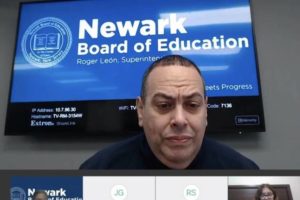[T]here is a more optimistic way to interpret the Newark experience, much of which has to do with the success of the city’s fast-growing charter schools. Charters, which received about $60 million of the philanthropy, now serve 30 percent of the district’s students, and families are clamoring to enroll their children.
The reasons are obvious. Unencumbered by bureaucracy and legacy labor costs, charters can devote far more resources to students, providing the kind of wraparound services that students like Beyah need.
An analysis by Advocates for Children of New Jersey noted “a substantial and persistent achievement gap” between students at charter and traditional public schools: “For example, while 71 percent of charter school students in Newark passed third-grade language arts tests in 2013-14 — higher than the state average of 66 percent — only 41 percent of students in Newark traditional public schools passed those tests.”
As for the district schools forced — or incentivized — to compete with charters, those involved with the Newark effort point to green shoots of change. Graduation rates are up. More higher- rated teachers are staying than lower- performing ones. Still, on state tests of third- to eighth-graders, math and reading proficiency went down in all six grades between 2011 and 2014


